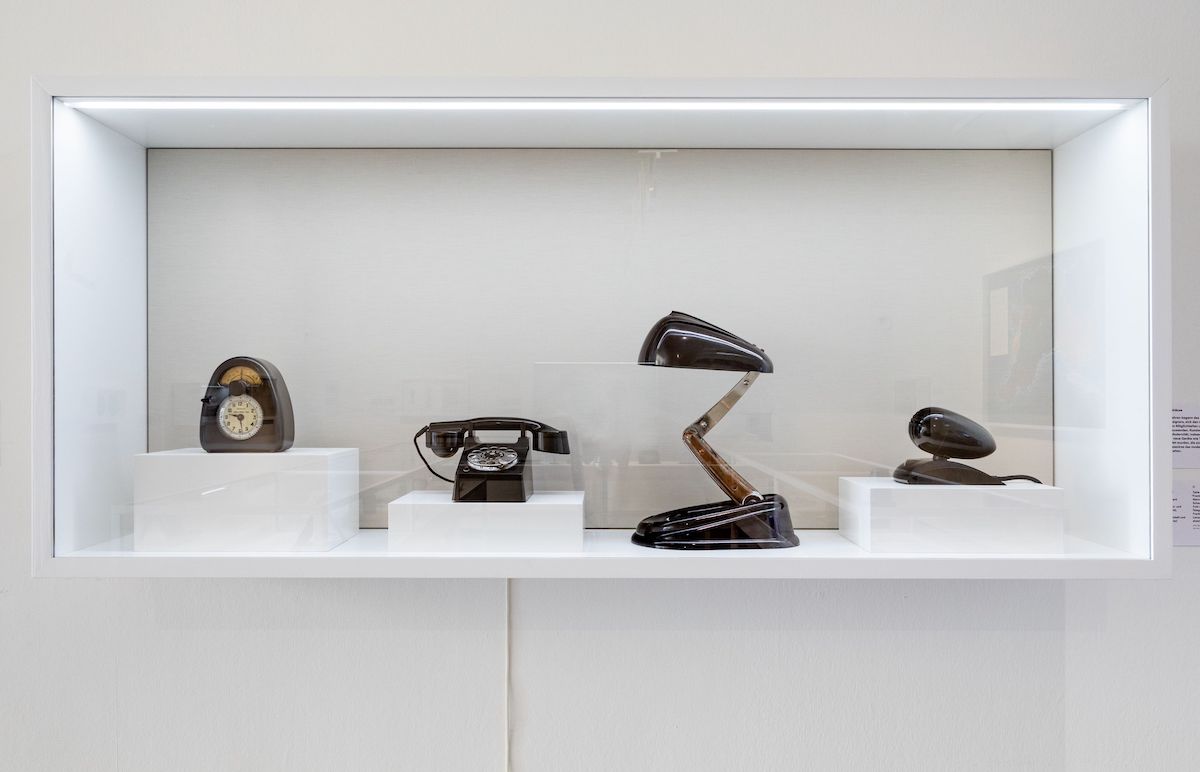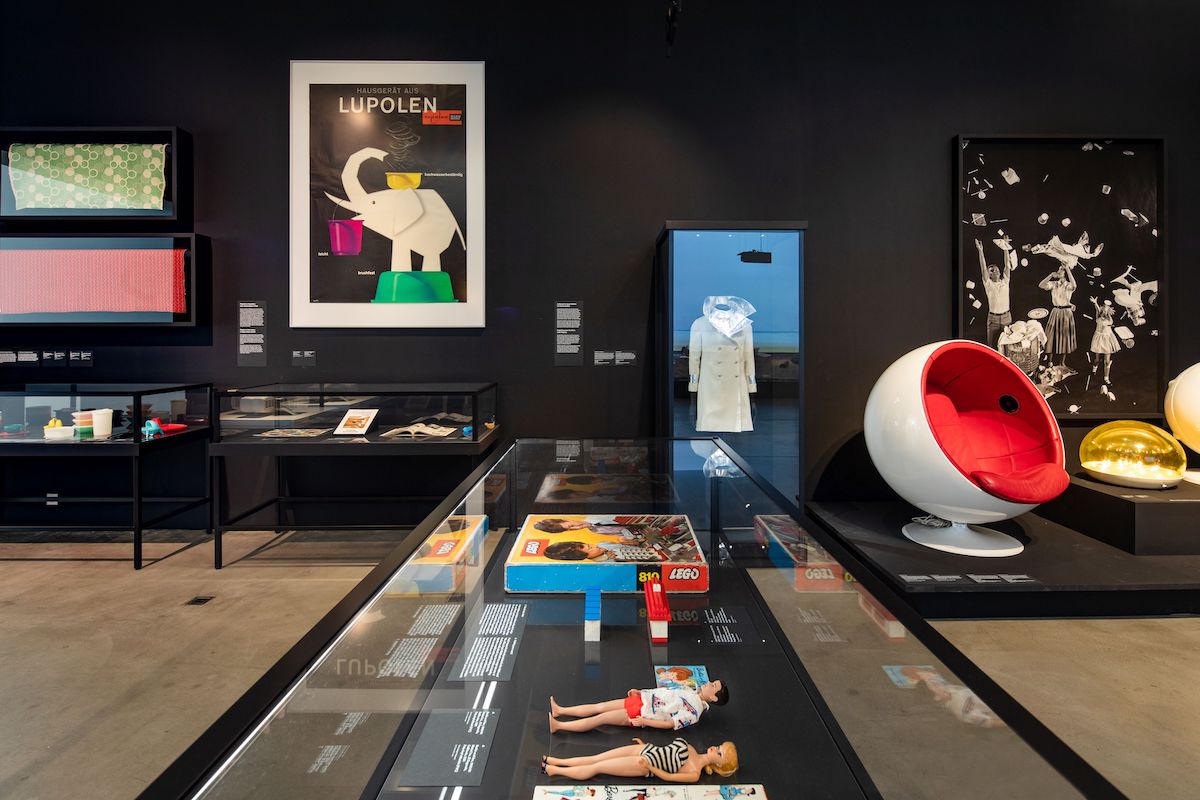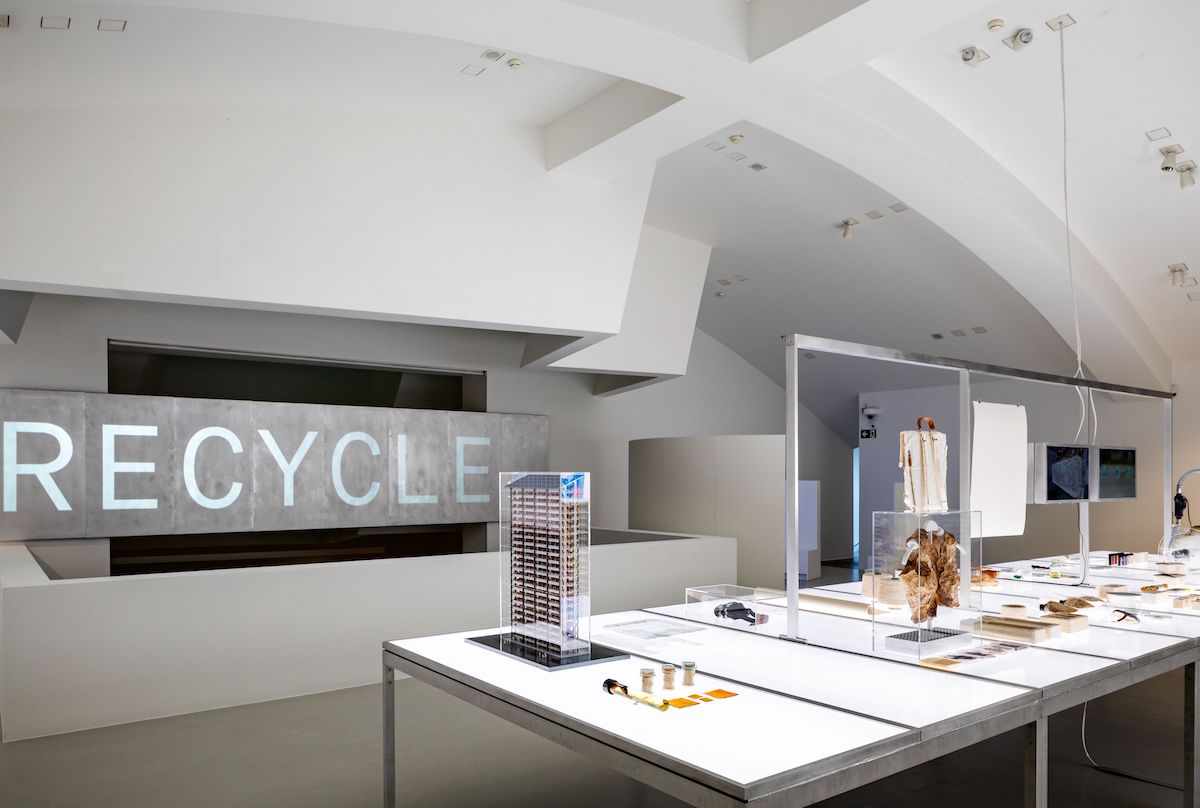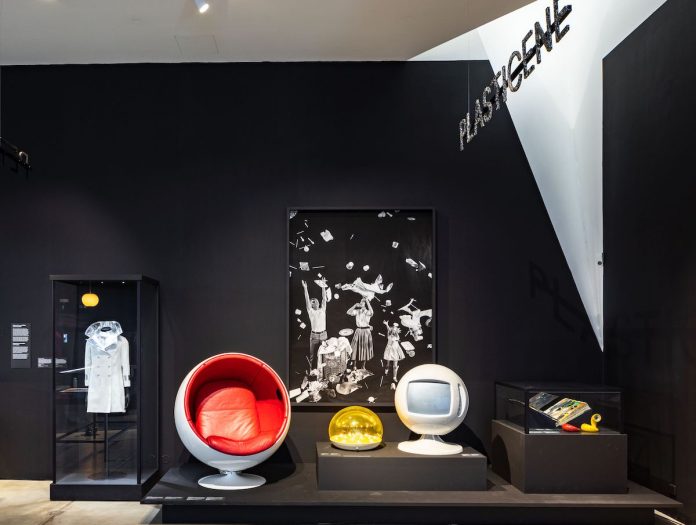A symbol of thoughtless consumption, but also of revolutionary innovation. It cannot be denied: plastic is an omnipresent part of our lives. Packaging, apparel, design, automobiles, architecture… and many other things as well. Once a material with experimental charisma, holding court through the 20th century, today it is one of the main causes of pollution.
This is the dual focus of the exhibition “Plastic: Remaking Our World” organized by the Vitra Design Museum, V&A Dundee, and MAAT Lisbon, on view at the Vitra Design Museum from 26 March to 4 September.
Between bygone glories and current catastrophes, the show prompts reflection on the future of this controversial material, along with cutting-edge solutions for its more sustainable use.

Pavilion after pavilion, visitors come across decades and objects: from rarities connected with the origins of the plastic age (like the Frankfurt table telephone designed by Marcel Breuer in 1928) to objects of pop culture (first of all, the Panasonic Toot-a-Loop R-72S radio from 1969), all the way to contemporary design creations that make innovative and sustainable use of plastic materials (see the REX chair by Ineke Hans in 2021), including smart concepts for the reduction of waste and recycling, or bioplastics derived from seaweed.

The invention of celluloid by John Wesley Hyatt around 1860 was triggered by the need to find a replacement for ivory in the production of billiard balls. In 1907 Leo Baekeland invented the first plastic made of purely synthetic components, which he called Bakelite. This was hailed as a material with infinite uses. Then came the petrochemical industry and industrial design in the 1930s (together with personalities like Egmont Arens, Wells Coates and Gio Ponti), which immediately grasped the potential of the new material. The war accelerated its growth (just consider the use of Plexiglas for aircraft canopies or Nylon for parachutes). Then came the use in the 1970s of plastic in domestic settings: early examples include Tupperware, but also toys like Lego and Barbie dolls.

Architecture embraced plastic as a construction material – in 1957 Monsanto made the “House of the Future” entirely in plastic, on view at Disneyland in California. The Space Age brought another boost the expressive forms achieved in plastic, also thanks to new interior design concepts: just consider the futuristic lines of the “Ball Chair” by Eero Aarnio (1963) or the “Moon Lamp” by Gino Sarfatti (1969).
It was not until the 1990s that people began to talk about recycled plastic and possible strategies to reduce consumption. Designers like Jane Atfield, Bär + Knell and Enzo Mari were among the first to work with recycled plastic.

Today we are having to cope with the consequences of the plastic boom years. How can we resolve the global crisis of plastic refuse? What role can be played by design? These are just some of the questions addressed in the final part of the exhibition, presenting projects like “The Ocean Cleanup,” “Everwave” or “The Great Bubble Barrier,” developed to filter waste out of rivers and oceans.
A satellite exhibition in the Gallery of the Vitra Design Museum examines the theme of recycling: starting with the project “Precious Plastic” launched by Dave Hakkens in 2013, which shows how plastic waste can be transformed into a precious resource.







